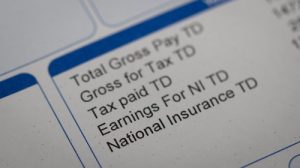Double check your tax code
The tax code being operated against your salary determines your monthly take home pay. An incorrect code number can often result in a significant amount of tax being owed to HMRC.
The tax code generally includes the tax-free personal allowance, currently £12,570, and an allowance for professional membership fees, for example. It may also include restrictions, such as tax owed for a previous year or a benefit in kind for an NHS lease car.
The PAYE system and tax codes work fairly well when you have only one salary, from one job. The system struggles when you have multiple employment sources; for example, agency and bank work in addition to your main salaried post.
Often the tax code on a secondary employment will be BR (basic rate), meaning 20% tax is suffered on the income. As many doctors will be higher rate taxpayers (40% or 45%) a BR tax code means an additional 20%, or even 25%, will be due on the additional employment earnings.
The tax-free personal allowance is tapered when an individual’s taxable income exceeds £100,000. The tapering means that, at £125,140 of taxable income, the personal allowance is lost completely.
If, during the tax year, the full personal allowance was included in your tax code and it later transpired that this was not due as your income was higher than £125,140, this alone would result in £5,028 tax being owed to HMRC.
It is important that you regularly review your tax code to ensure it correctly reflects your income levels and financial circumstances, otherwise a nasty tax surprise could be round the corner.
Contact us to see how we can help: jason@doctorstax.co.uk

